Popular games for platform Game & Watch
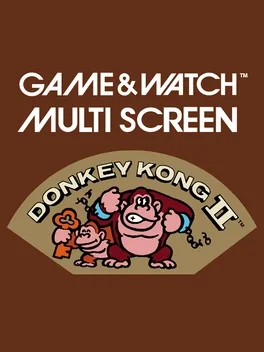
Donkey Kong II was developed by Nintendo R&D1 and released as part of the Game & Watch Multi Screen series, featuring two LCD screens. It was released in 1983. Donkey Kong Jr. has to touch a key, then it moves up to the top screen. Donkey Kong Jr. has to climb to the top screen while avoiding things such as electrical wires. When he gets to the top screen, Donkey Kong Jr. will have to touch the key again, and it will move to the keyhole of one of the chains. Donkey Kong Jr has to climb up the rope below the keyhole, while avoiding birds. When he gets to the top of the rope, one of the chains will unlock. He has to do this 4 times until he saves Donkey Kong. After that, the game will start over, at a somewhat faster pace.
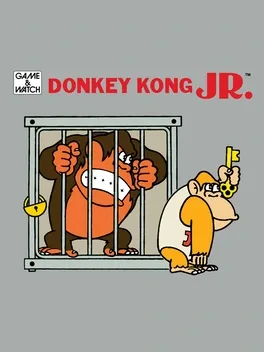
The first Game & Watch version of Donkey Kong Jr. is the first game in the New Wide Screen series. It is a single-screen single-player game.
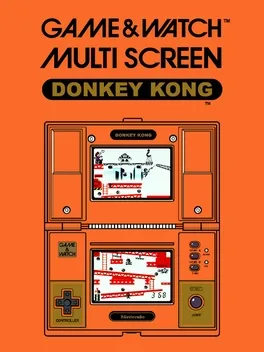
Donkey Kong is a Multi Screen Game & Watch game released in 1982. It was based on the arcade game Donkey Kong, with gameplay based only on 25m, the first stage from the arcade version. This was the first Game and Watch game to be based on pre-existing Nintendo characters, and it was the first video game system to include the D-pad, a feature of all future Nintendo systems. The game unit's model is DK-52, with the DK standing for Donkey Kong. The game was a huge success, selling over 1,000,000 copies worldwide.
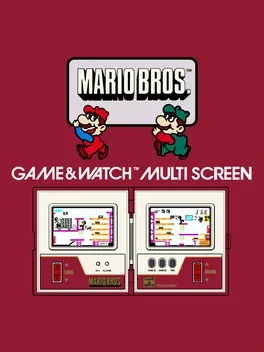
Mario Bros. is a title for the Game & Watch. Despite its name, it has no similarity to the arcade game Mario Bros. Instead of plumbing, Mario and Luigi are working at a bottling factory and must prepare packages of bottles to load onto a delivery truck. This game, played on the Multi Screen model of the Game & Watch, a few months before the much more popular arcade title, making it the first game to feature Luigi.

Zelda is a multiscreen Game & Watch game that was only released in English as a stand-alone system pre-loaded with the single game. It has dual screens which fold in a clamshell design, similar to the Nintendo DS. It was re-released as part of the Nintendo Mini Classics line in 1998 and 2007. The complete game can also be unlocked in Game & Watch Gallery 4 for the Game Boy Advance and Wii U Virtual Console. Its core formula is based on that of the original The Legend of Zelda, where Link must fight through eight dungeons and obtain the eight shards of the Triforce of Wisdom. However, it bears more gameplay similarities to The Adventure of Link, since it is 2D and from a side-on perspective. The game features an original, though minimal storyline.
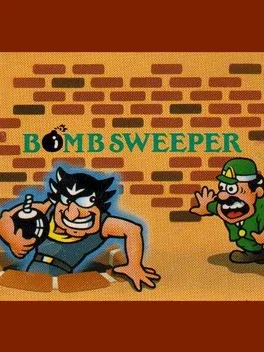
Bombsweeper was a multi-screen Game & Watch video game released in June of 1987. The game was never released in Japan. The game's model number was BD-62. Using the D-pad to move John Solver, you must reach at least one of the bombs hidden in the walls to clear the screen and receive a bonus for the time remaining. The only obstacles in your path are the walls, which you must either maneuver around or push them along provided there is no obstruction in the way. Some levels are a test of speed, others are a test of logic and intelligence.

Climber is a Game & Watch video game released in the Crystal Screen format in 1986 and the New Wide Screen format in 1988. The game was never released in Japan, and an estimated 250,000 of the New Wide Screen version were produced by Nintendo. The model number for the Crystal Screen version is DR-802, while the model number for the New Wide Screen game is DR-106. Some speculate that the game is based on the Ice Climber NES game, though this is unconfirmed. In Climber, you are a child known as Climber who, with the help of Lord Meiji's teachings, jumps across platforms trying to get to the top of Block Mountain while avoiding enemies and platforms that move. The enemies are the Blockmen, which walk and turn into block platforms when they reach a gap; Eyerom, birds that fly and get in the Climber's way; and thorny plants, which are obstacles in the way of Climber's movements. In each set of 5 levels, the first 4 ends with a bonus game where Climber has 2 chances to time his jump to catch Hentori, the bonus bird. On the fifth level, Climber must jump and grab the sword at the correct time to stab and defeat Dragalo the dragon.
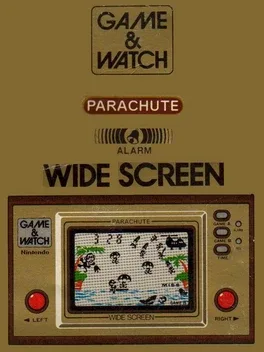
Parachute is a game for the Game & Watch where you have to save people from a helicopter and make them land in your boat. You will direct your boat under the person try and let them land safely. If they land in the water, a shark will come and eat them- if this happens three times you will lose and will have to start over.

Lifeboat is a multi-screen Game & Watch video game released in 1983. Nintendo produced an estimated 500,000 units worldwide. The model number for the game was TC-58. In the game, you'll have to maneuver two lifeboats and catch people who are jumping out of a ship on fire. The game was held similarly to how you would hold a book.
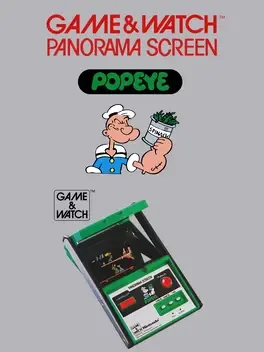
The Panorama Screen version of Game & Watch Popeye. It is a different game from the Wide Screen series Popeye.
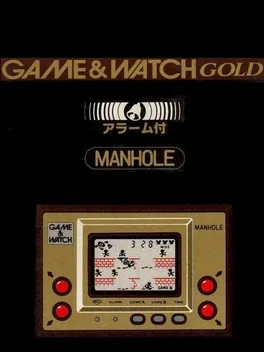
Manhole is a Game & Watch game. In the game, you must save pedestrians from falling into manholes by covering them up. If one falls through, you will lose and will have to start over.
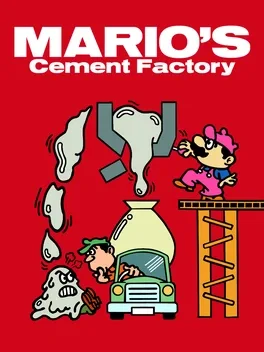
Mario's Cement Factory is a Game & Watch game. Two versions of the game were produced: the first was for the Game & Watch Table Top and the second was a more conventional New Wide Screen Game & Watch. In both versions, Mario's mission in the cement factory is to open doors to prevent cement containers from overflowing. To get to the different containers, Mario has to jump onto moving platforms. The game was remade as a downloadable DSiWare title.

Mario's Bombs Away is a game for the Game & Watch. It was one of the six games made for the Panorama line. The game involves Mario, a soldier in this game, on a mission to receive a bomb from his buddy on the left side of the screen and carry it to his troop on the other side. The enemy is waiting in the trees in his path, so he must keep his bomb away from their torches.

Donkey Kong Hockey is one of the few two-player Game & Watch games ever manufactured. It was released as a part of the Micro Vs. series. Donkey Kong and Mario must engage each other in a two-player game of ice hockey. The game is colorless, being set up on a small LCD screen. The console is an elliptical shape, while the controllers are small and circular; the console can open up to store the controllers.

Fire is a silver type Game & Watch video game unit that was initially released on July 31, 1980. The game is one of the best selling in the Game & Watch series selling an astonishing (albeit estimated) 1,000,000 copies worldwide. A re-release for the game was made for the Wide Screen units, which sold 200,000 more units that the silver edition. This particular version of the game was released on December 4, 1981. In the game, you'll control two separate characters holding a stretcher of some sort. In the game, people are jumping out of a burning building, and your goal is to get them to safety by using the stretcher to bounce them into an ambulance, with most taking more than one bounce to get there.
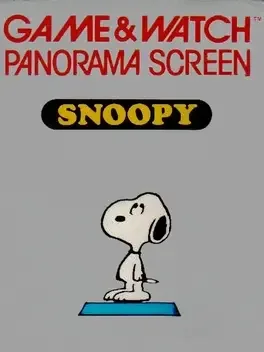
Snoopy is a Tabletop and Panorama Game & Watch video game released in June of 1983 by Nintendo. The game's model number was SM-73 and SM-91 for the Tabletop and Panorama version, respectively. It is unknown how many units the Tabletop version sold, though Nintendo manufactured an estimated 250,000 versions of the Panorama game. The contents within the Panorama game included the unit, LR44 batteries, a caution leaflet, and battery stickers. CGL and Futuretronics versions of the game were also released. In both games, you're required to hit the musical notes when they arrive in the appropriate position.
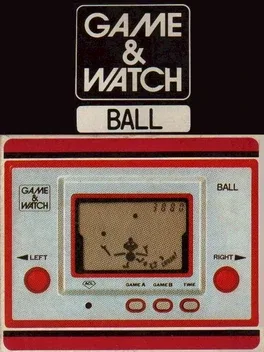
Ball (originally known as Toss-Up in North America) is a Game & Watch game released as a part of the Silver series on April 28, 1980. It was the first Game & Watch game. It is a single-screen single-player Game & Watch. In Game A, the player tosses two balls in the air. As the balls fall, the player must catch and toss them up again. One point is earned for each successful catch. A dropped ball will display a broken ball and end the game. The object is to continuously catch the balls that fall and throw them back up, as in juggling. In Game B, the player must juggle three balls, and each successful catch rewards ten points instead of one.
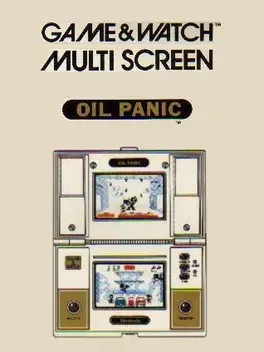
Oil Panic is a video game unit that was released as part of the Game & Watch multi screen series. In the game, the player has to catch dripping oil from an oil leak in a pipe. Once he does, he has to go into his bosses room on the second screen to empty it. If he misses a drop then the player loses a life.
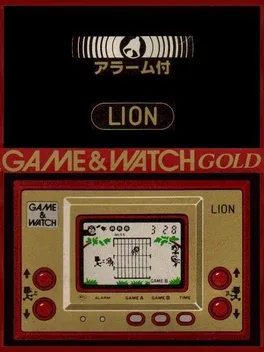
Lion is a Game & Watch game and the last game in the G&W Gold series. In the game, you control two lion tamers and try to keep the lions in the cage. If one of the lions escape, you will lose and will have to restart.
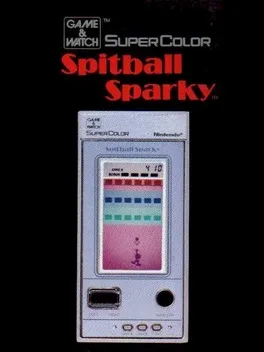
Spitball Sparky is a Super Color Game & Watch game released in 1984 by Nintendo. The game's model number was BU-201, and the contents within the box included the game, LR44 batteries, a caution leaflet, a how to play leaflet, and battery stickers. The game is very similar to the arcade classic Arcanoid and has colors due to the layers of colored plastic overlay. Your goal is to spit on the ball so that it'll go back up and destroy the blocks at the top. The unit was rectangular and silver. When Nintendo of America released the game in America, they made artwork for the game that had a more detailed character.

Safebuster is a multi-screen Game & Watch game released in January of 1988. The game was never released in Japan. The game's model number was JB-63. Worldwide Nintendo manufactured an estimated 500,000 Safebuster models. A pocket size version of Safebuster was also released in America and Europe. Safebuster also appears as an unlockable museum game in Game & Watch Gallery 4, albeit in Classic version only. In this game, the player controls a man who must catch bombs. By pressing the left or right buttons, you can move the man in the direction of the pressed button. After catching them, he must move to the edges of the screen to dispose the bombs. However, he can only hold up to three bombs. If a fourth one is caught, it will explode instead, as if a bomb was missed.

Game and Watch game from the original 1980 silver series that was re-released as a Nintendo DSi Virtual console game

Turtle Bridge is a widescreen Game & Watch video game released in 1982 by Nintendo. In the game, you must get the character from one side of a lake to the other by jumping on the shells of turtles that are protruding from the water. If you jump on a turtle at the wrong time, then you will have to go back to the beginning. The fact that the turtles gain your character access to the other side of the lake is where the game's name originates from.
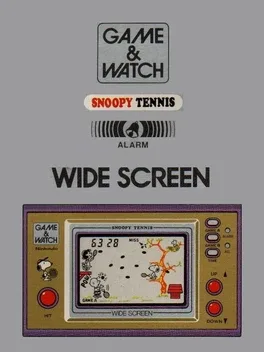
Snoopy Tennis is a Game & Watch video game released in 1982 by Nintendo. The game was very successful, perhaps due to the Snoopy label, with Nintendo producing an estimated 1,200,000 worldwide. In the game, you control Snoopy, moving him up and down to make him hit the oncoming tennis balls with your racket. It was released on the Wide Screen format. A version of the game was released as a keychain title under the mini-classics label.